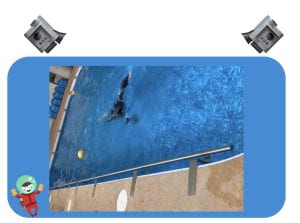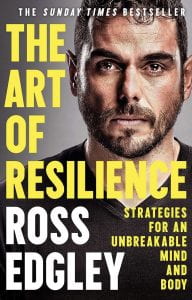It is nice to be able to see a book that explains, using a review of all the possible scientific research, the foundation of nutrition. Teachers know from the Canadian Food guide what we need to eat in order to be healthy. There is a difference between knowing and putting into practice. There is a difference between knowing and modelling. After reading this book, I was happy to know that I eat plenty of fruits and vegetables and I exercise. It is really a good reminder.
This book is filled with physiological details about the effect of food on the anti-aging pathway. I will only mention some scary statistics and a few things I still need to include in my own diet.
Today, 1 in 500 Americans even get close to a modestly healthy diet. 70% of Americans are on prescription drugs. The leading risk factor for death in the U.S. is what we eat. It’s food. 80% of chronic disease and premature death could be prevented by not smoking, being physically active and adhering to a healthful dietary pattern. 8 out of 10 American adults fail to meet the national physical activity guidelines.
AMPK (AMP-activated protein kinase) flips the switch in our body from storing fat to burning it to restore energy balance. AMPK also cleans house, sweeps away accumulated waste and effectively institutes a sort of cellular reset. AMPK also activation and leads to mitochondrial biogenesis. Foods that boost AMPK are barberries, black seeds, hibiscus, and vinegar.
Autophagy is our body’s recycling system. Food that boost autophagy include: coffee, mushrooms, mangos, green peas, lentils, cheddar, lettuce, corn, broccoli, chickpeas, cauliflower, wheat germ.
An apple a day keeps the doctors away. Apples actually improve artery function. Strawberries can improve cognition, cholesterol, inflammation and osteoarthritis.
You have problems with inflammation? The top 5 foods that cause inflammation are: cheese & pizza, cake & ice cream, chicken dishes, pork, and burgers. The author says that within hours of eating a high-fat meal, your arteries can stiffen, cutting in half their ability to relax normally. Food that decreases inflammation: turmeric (single-most anti-inflammatory food), ginger and garlic (in second place). Tea is the most anti-inflammatory beverage. Also, we need to swap refined grains in favour of whole grains. Blueberries and strawberries can significantly reduce markers of inflammation. Beans are also great anti-inflammation if you are not allergic to them. A daily green smoothie, packed with fruits and vegetables is great. Kale is particularly anti-inflammatory. Flax seeds also reduce conventional inflammatory markers and blood pressure.
Traduction de Gemini:
Pourquoi j’ai l’impression d’avoir la moitié de mon âge
C’et agréable de pouvoir voir un livre qui explique, en passant en revue toutes les recherches scientifiques possibles, le fondement de la nutrition. Les enseignants savent, grâce au guide alimentaire canadien, ce que nous devons manger pour être en bonne santé. Il y a une différence entre savoir et mettre en pratique. Il y a une différence entre savoir et modeler. Après avoir lu ce livre, j’étais heureux de savoir que je mange beaucoup de fruits et légumes et que je fais de l’exercice. C’est vraiment un bon rappel.
Ce livre regorge de détails physiologiques sur l’effet de la nourriture sur le processus anti-âge. Je ne mentionnerai que quelques statistiques effrayantes et quelques éléments que je dois encore inclure dans mon propre régime alimentaire.
Aujourd’hui, aux États-Unis, seulement 1 Américain sur 500 se rapproche d’un régime alimentaire modérément sain. 70 % des Américains prennent des médicaments sur ordonnance. Le principal facteur de risque de décès aux États-Unis est notre alimentation. C’est la nourriture. 80 % des maladies chroniques et des décès prématurés pourraient être évités en ne fumant pas, en étant actif physiquement et en suivant un régime alimentaire sain. 8 adultes américains sur 10 ne respectent pas les directives nationales en matière d’activité physique.
L’AMPK (protéine kinase activée par l’AMP) bascule le commutateur de notre corps du stockage des graisses à leur combustion pour rétablir l’équilibre énergétique. L’AMPK fait également le ménage, balaye les déchets accumulés et institue efficacement une sorte de réinitialisation cellulaire. L’AMPK active également la biogenèse mitochondriale. Les aliments qui stimulent l’AMPK sont les épines-vinettes, les graines noires, l’hibiscus et le vinaigre.
L’autophagie est le système de recyclage de notre corps. Les aliments qui stimulent l’autophagie comprennent : le café, les champignons, les mangues, les pois verts, les lentilles, le cheddar, la laitue, le maïs, le brocoli, les pois chiches, le chou-fleur, le germe de blé.
Une pomme par jour éloigne le médecin. Les pommes améliorent en fait la fonction artérielle. Les fraises peuvent améliorer la cognition, le cholestèrel, l’inflammation et l’arthrose.
Vous avez des problèmes d’inflammation ? Les 5 principaux aliments qui causent de l’inflammation sont : le fromage et la pizza, les gâteaux et la crème glacée, les plats au poulet, le porc et les hamburgers. L’auteur dit que quelques heures après avoir mangé un repas riche en graisses, vos artères peuvent se rigidifier, réduisant de moitié leur capacité à se détendre normalement. Aliments qui diminuent l’inflammation : le curcuma (l’aliment anti-inflammatoire le plus important), le gingembre et l’ail (en deuxième place). Le thé est la boisson la plus anti-inflammatoire. De plus, nous devons remplacer les céréales raffinées par des céréales complètes. Les myrtilles et les fraises peuvent réduire considérablement les marqueurs d’inflammation. Les haricots sont également un excellent anti-inflammatoire si vous n’y êtes pas allergique. Un smoothie vert quotidien, rempli de fruits et légumes, est excellent. Le chou kale est particulièrement anti-inflammatoire. Les graines de lin réduisent également les marqueurs inflammatoires conventionnels et la tension artérielle.







